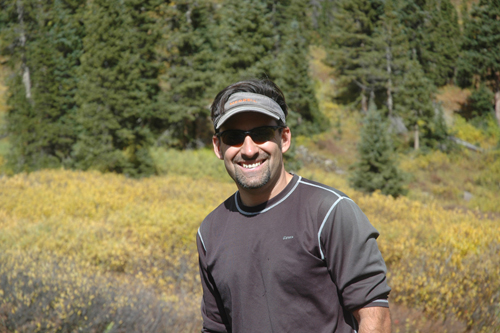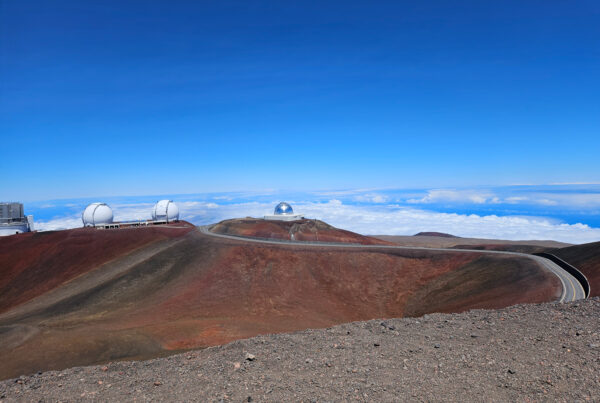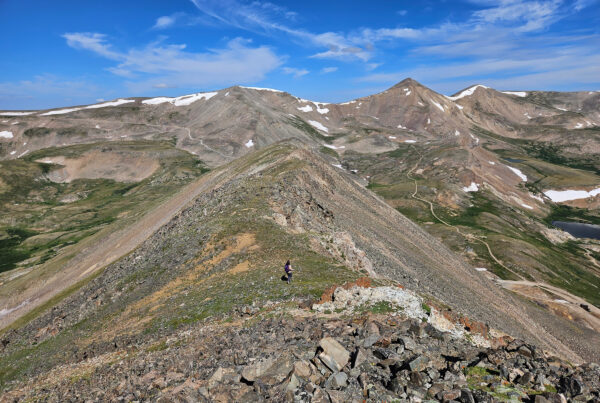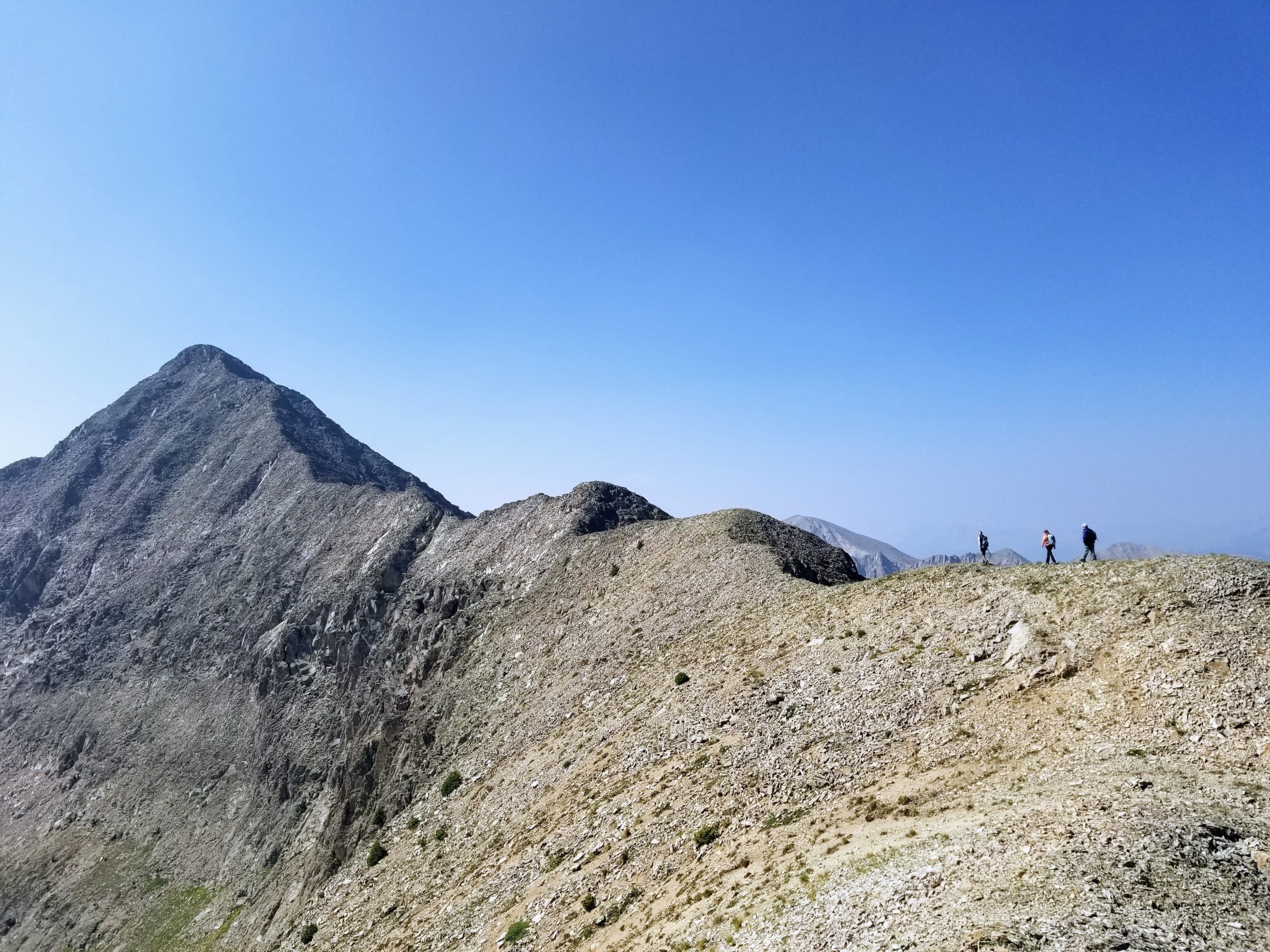Last Updated on July 31, 2023 by James Dziezynski
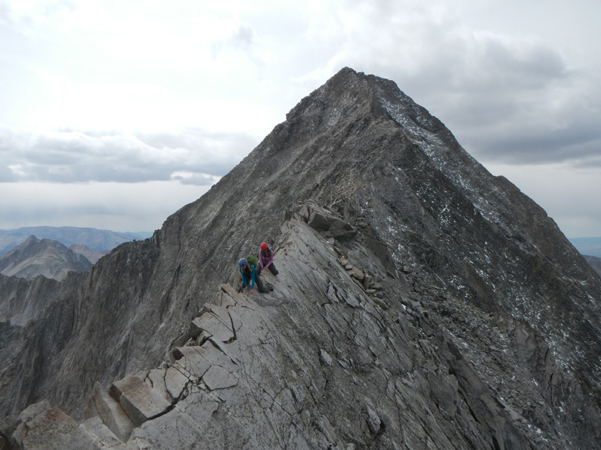
Let’s just get it out of the way. Here’s Capitol Peak’s famous Knife Edge traverse. The exposure is big, but the rock is solid, so take a deep breath and get it done!
In order to complete all of Colorado’s 14,000 foot peaks, there’s going to be a handful that test your nerves, endurance and mountaineering skill. At the top of the list is 14,130 ft. Capitol Peak, regarded by many as the most difficult 14er to summit. Whether it’s the 17-mile round trip circuit, the stomach-turning exposure of the famous knife edge or the sustained 4th class climbing, reaching the top of this burly mountain is as taxing mentally as it is physically.
Thankfully, the approach to Capitol Peak is one of the most lovely in all of Colorado. A smooth, well worn trail gradually takes you from the 9,400 ft. parking lot to 11,600 ft. Capitol Lake, the staging area for most attempts and a divine camping spot. Over 5.5 miles you’ll pass expansive aspen groves intertwined with pine forests, all the while Capitol Peak’s hulking presence looms in the distance.
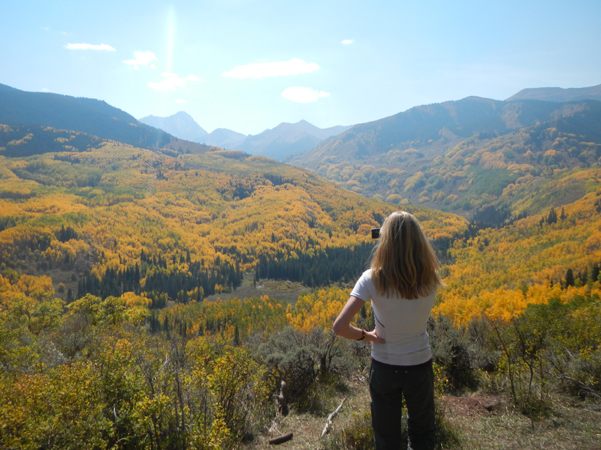
One does not simply walk up Capitol Peak. It watches over the entire prelude to the climb.
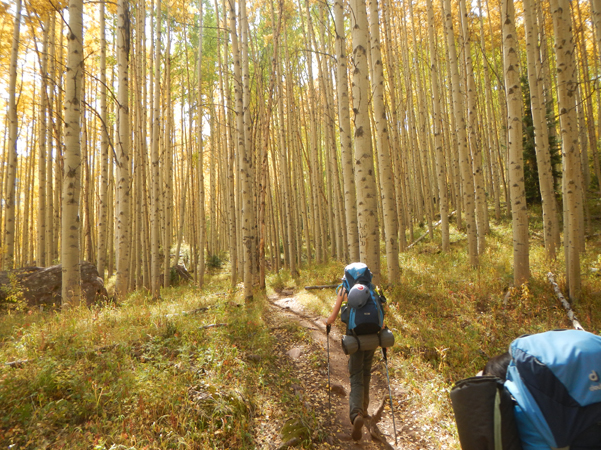
The gentle, gradual climb to Capitol Lake is a brilliant and beautiful passage.
Thankfully everything necessary for success in getting to the top went as planned. It was in the details we had a few problems. This included an exploding camp stove, a popped thermarest, a popped inflatable pillow, a haywire altimeter watch, ripped pants x 2, broken sunglasses, and to top it all off, after a 13-hour day in the mountains, a dead truck battery in the barren parking lot.
Capitol Peak Hike – The Day of the Climb
Our climb began pre-dawn. Since we had a glorious, storm-free autumn forecast, we aimed to be at the top of the Mount Daly/Capitol Peak saddle right at sunrise. This way, we wouldn’t have to do route finding in the dark. We timed it perfectly. Rather than drop into the lower basin, we stayed high on the class 3 and 4 ledges. Don’t underestimate some of the tricky route finding and class 4 downclimbing in this section. While it’s a good preview for what’s ahead, the path isn’t really marked until you reach the broad talus field of K2.
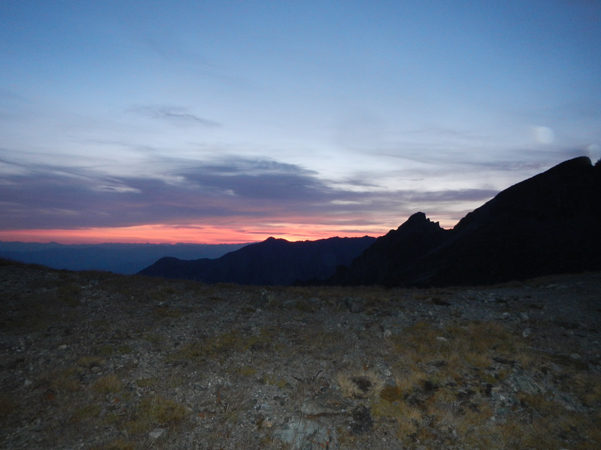
To avoid route finding in the dark, we timed our morning to hit the Mount Daly – Capitol Peak saddle at sunrise.
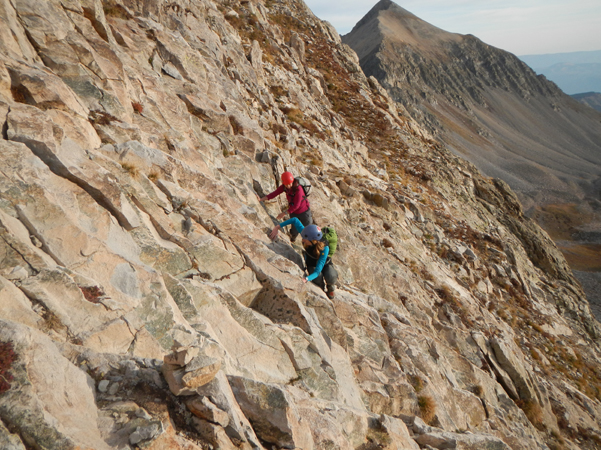
The “new standard” approach to Capitol has some legit class 4 moves. The “old standard” drops over the saddle and ascends a rocky boulder field.
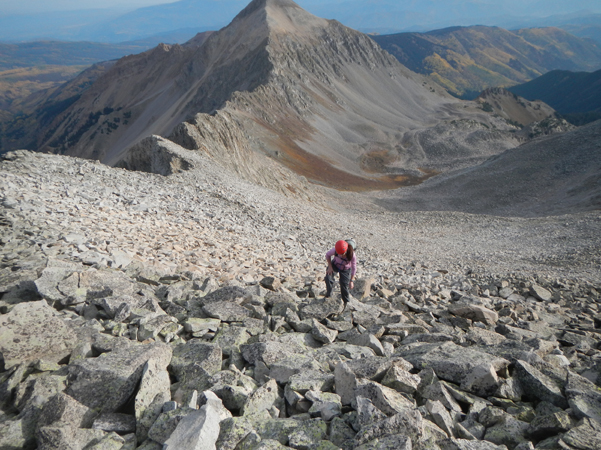
Whether you traverse the high ledges or drop into the basin, you eventually have to navigate the boulderfield to the sub-peak known as “K2”.
En route to K2, there is a break from the scrambling. Hopping across boulders is a nice reprieve.
When we reached the K2 block, we were met with what was the crux of our entire day. We were all mentally ready for the knife edge and the tricky, exposed route climbing on the rest of the route. Bypassing K2 turned out to be harrowing thanks to small, insidious foot placements on the mountain’s north side. Every spot that needed to be clean and solid was snowy or icy, especially where quality handholds were sparse. These sections were brief but a fall here would have been catastrophic. There have been multiple fatalities in this section, so we really took it easy and remained diligent.
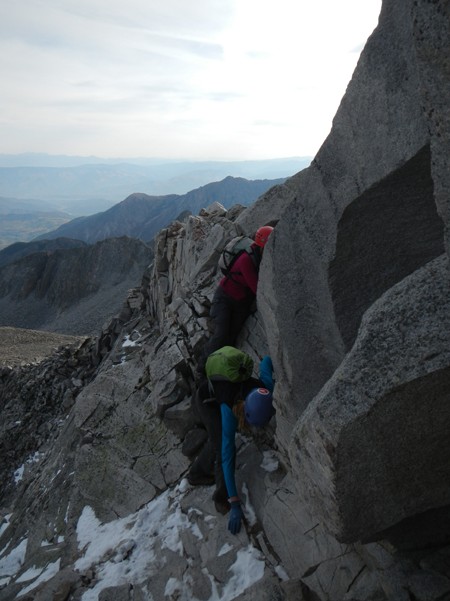
It looks rather tame but this short ten foot section on the K2 bypass was the most dangerous crux move of our entire hike. Those icy patches were the only decent footing available.
Crossing the Knife Edge
The fabled knife edge is every bit as airy and nerve-wracking as advertised. If you’re comfortable with exposure, it’s quite fun—the rock is solid and reliable. The prelude to the knife edge is rather exposed, which is worth mentioning. The good thing about the knife edge is that you can always straddle the ridge, and by alternating left to right, there are decent foot placements. If you can stomach the 1,500 ft. drop, gazing down is amazing.
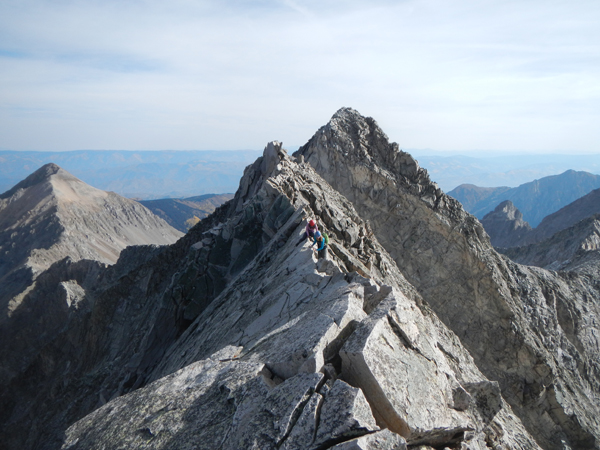
Take your time coming across the knife edge.
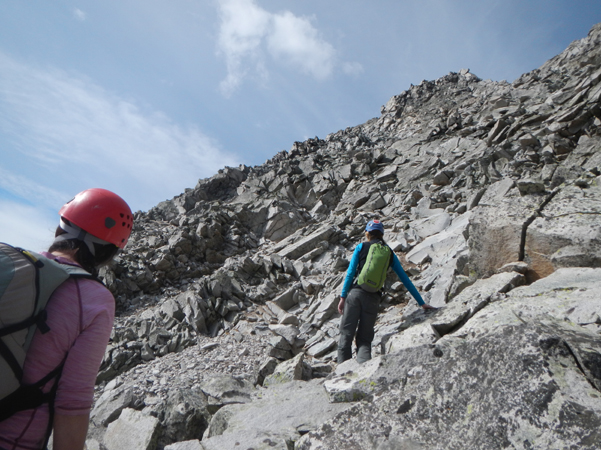
The upper ridge of Capitol Peak is unrelenting class 4 terrain with a few class 3 moves. Stay focused!
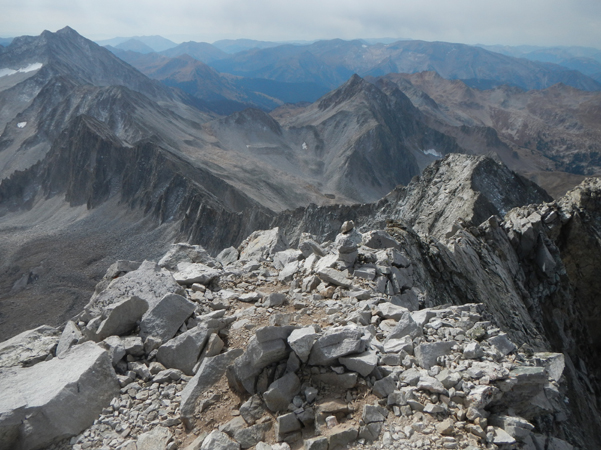
The summit of Capitol Peak, looking out at the ridge that connects Capitol with another 14er, Snowmass Mountain.
Past the knife edge, our team really shined. The three of us could scout out the lines of least resistance. This requires prolonged focus. Even though we all have slightly different climbing styles, we could navigate the sustained class 4 sections in good time. Even though the distance between K2 and the summit is about 0.6 miles, it took a few hours to dial in the best way.
The Summit of Capitol Peak – You Ain’t Done Yet!
The small summit has a pair of “rabbit ear” rocks and looks out onto the glory of the Elk Range Peaks, including the Maroon Bells and Snowmass Mountain. The nearby 13ers – Clark Peak and Mount Daly among them – are also impressive. We didn’t waste any time on the top. Even though we weren’t expecting storms, clouds filled the sky and dropped quick hits of snow and mist. The last thing we wanted was a wet knife edge on our return.
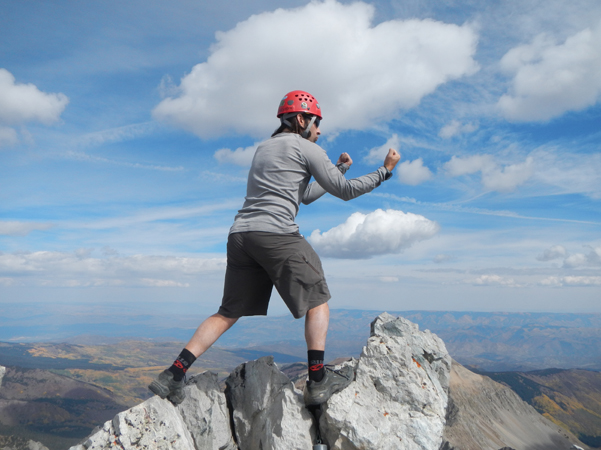
The Capitol Peak pugilist returns!
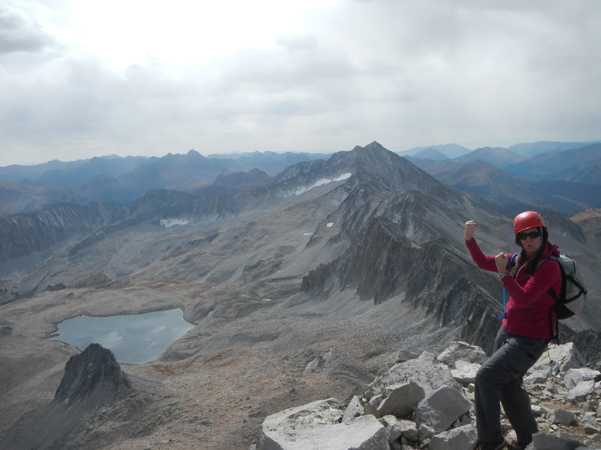
Sheila has the right idea!
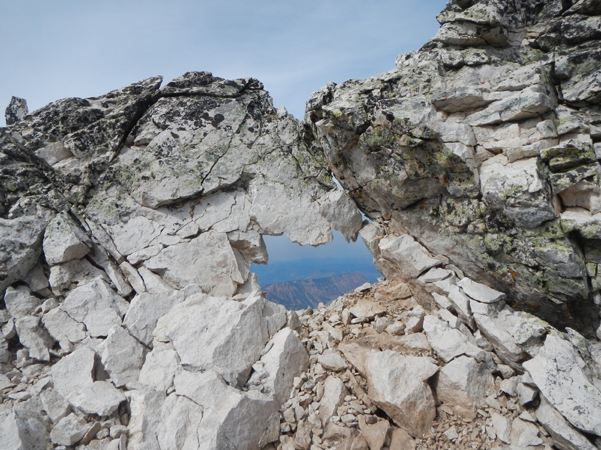
Cool au natural window in the rock.
With our nerves set on high, we retraced our route. This is a highly challenging part of the day and one that many trip reports overlook. Lots of face-in down climbing and gutsy moves await. Returning over the knife edge was easier the second time – in fact, we agreed the hardest part was the first, committing move going up.
Once again, we had to maneuver past the crux of the climb, the small, declined ice steps around K2. With one more burst of moxie, we were back at the boulder field. We decided to descend the old class 2 boulder field route rather than return on the class 3 and 4 ledges, mostly because we were now getting a bit of mist and snow. The class 2 boulder field also allowed us to rest our nerves and turn down the focus for a bit, though the crackling terror of nearby rockfall reminded us we were in the crumbling Elk Range. You can’t let your guard down here.
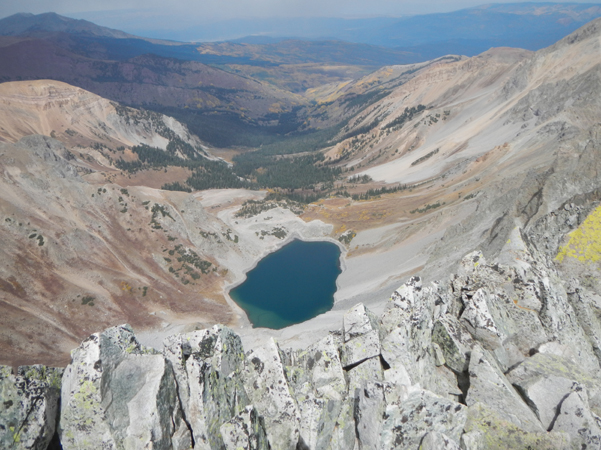
Wowzas, what a view of Capitol Lake! The camping areas are in the high forests on the far side of the lake.
We returned to the Daly-Capitol saddle in about 7 hours and 15 minutes from our start. After all that hard work, the easy switchbacks back to camp were a nice finish on the day. A quick refuel, and we were able to enjoy the long hike out as the sunset. Cows shifting in the darkness were a bit spooky and, at one time, blocked our path, but luckily, they meandered into the woods, granting us passage.
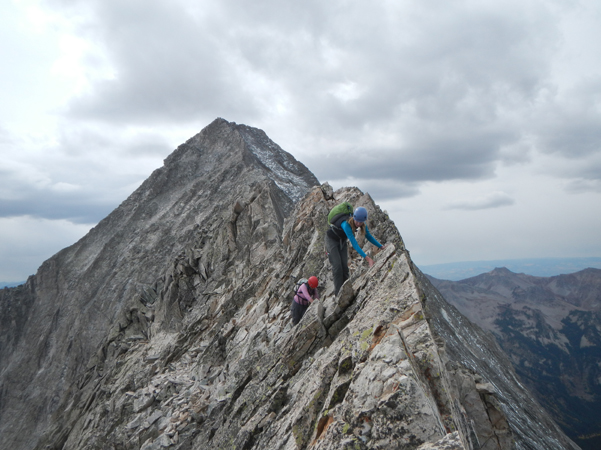
The “warm up” before (and after) the knife edge still demands respect.
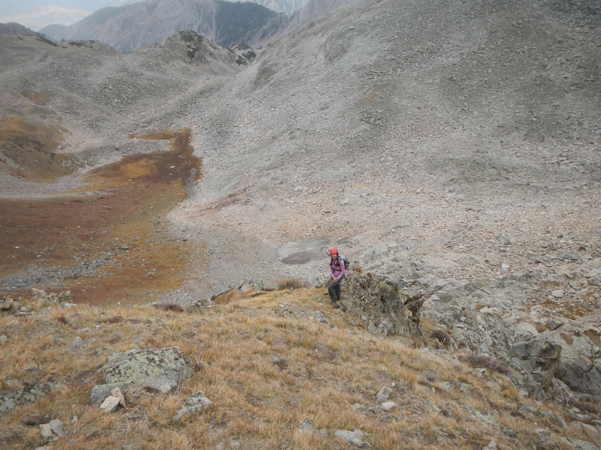
The lower boulder field offers a non-technical return but keep an eye out for rockfall — all those big rocks got there from sliding off the higher peak!
After the Hike
It was a major bummer to have a dead truck battery (thanks to a backpack strap caught in the rear gate that kept the interior lights on) on a Sunday night. We were tired, having been up since 4:30 AM, climbing to 14,000 ft and covering around twelve miles, five miles of that being class 4. There was one other car in the lot, but their battery was too weak to give us a jump (though they were nice enough to try). Pop starting failed, too (it’s a bit tough in the dark). Thankfully, our mountain karma shined and Jenny was able to call AAA, who drove up around 10:30 PM and gave us a life-saving jump. Twas a good thing we had a cell phone signal from the parking lot!
It was a long ride home to Boulder and Denver. Finally home at 3:30 AM, we were greeted by happy dogs and warm beds. We’d be paying for it on Monday… and Tuesday… but we had safely made it up and down Capitol Peak, one of the true giants of Colorado’s 14ers.
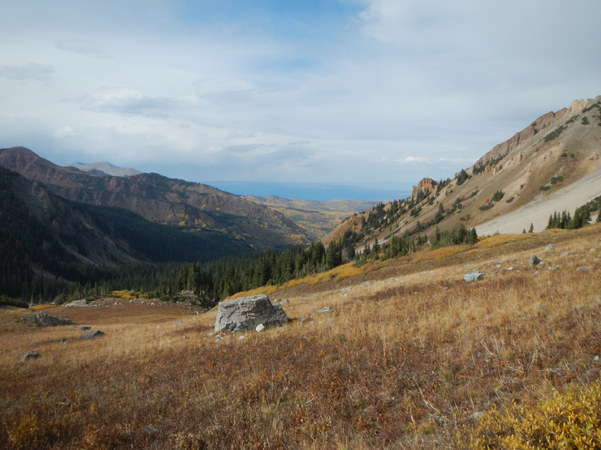
Enjoy the beauty of the Capitol Creek Valley on your return.

The charred remains of my MSR Whisperlite stove. We blew out an O-ring on the pump. Oops.

